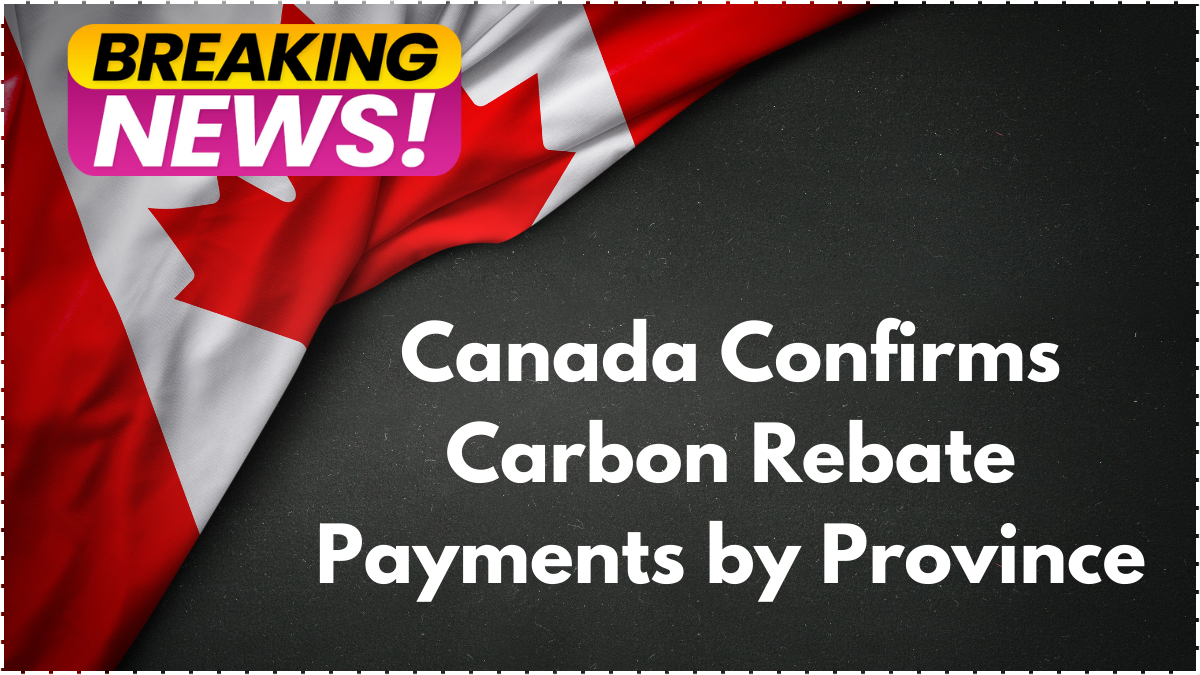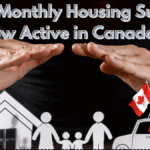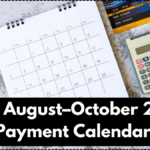The Canada carbon rebate 2025 is part of the federal government’s ongoing plan to return carbon pricing revenues directly to households. Designed to cushion the financial impact of carbon pollution pricing, this rebate—previously known as the Climate Action Incentive—provides quarterly payments to eligible Canadians. The latest confirmation of payment disbursements for June 2025 outlines the amounts by province, payment dates, and adjustments based on household size and residency.

Carbon Rebates by Province: How Much Will You Receive in June 2025?
The rebate varies by province due to regional differences in fuel charges and carbon usage. Here’s a breakdown of the expected carbon rebate payments per household:
| Province | Single Adult | Family of Four | Rural Supplement |
|---|---|---|---|
| Alberta | $140 | $280 | +10% |
| Saskatchewan | $150 | $300 | +10% |
| Manitoba | $130 | $260 | +10% |
| Ontario | $110 | $220 | +10% |
| New Brunswick | $100 | $200 | +10% |
| Nova Scotia | $105 | $210 | +10% |
| Prince Edward Island | $95 | $190 | +10% |
| Newfoundland & Labrador | $100 | $200 | +10% |
Note: Rural residents receive an additional 10% supplement on top of the base payment.
How the Carbon Rebate Works in 2025
In 2025, the Canada carbon rebate remains a tax-free benefit administered by the Canada Revenue Agency (CRA). Payments are made every quarter, with the June 2025 installment scheduled for the 14th. To be eligible, individuals must file a tax return for the previous year. There’s no separate application—eligibility is automatically assessed based on tax data.
The rebate is intended to return the majority of fuel charge revenues to consumers in the provinces where the federal carbon pricing applies. That includes Alberta, Saskatchewan, Manitoba, Ontario, and the Atlantic provinces, which opted into the federal system in 2023.
Key Changes and Adjustments for 2025
A few updates in 2025 make this year’s rebate slightly different:
- Updated Carbon Pricing: The federal carbon price has increased to $85 per tonne as of April 2025, which directly affects the rebate calculations.
- Enhanced Rural Supplement: The rural top-up has been maintained at 10%, continuing support for Canadians facing higher energy costs due to location.
- Digital Disbursements: CRA has improved its payment system, prioritizing direct deposit. Canadians without direct deposit may face slight delays in receiving their rebate.
These updates aim to improve fairness and efficiency while continuing to push toward Canada’s 2030 emissions goals.
Why the Carbon Rebate Matters More Than Ever
As inflationary pressures remain high into mid-2025, the carbon rebate is a crucial relief measure for many Canadian families. With fuel and energy prices still above pre-pandemic levels, this rebate offsets part of the cost burden and ensures the carbon pricing system remains equitable.
Moreover, by linking carbon costs to consumer benefits, the rebate encourages cleaner choices without disproportionately affecting low- and middle-income households. It’s both a climate policy and a cost-of-living tool.
Conclusion
The Canada carbon rebate 2025 is more than a climate policy—it’s a pocketbook issue for millions. With June payments confirmed, families can count on a financial boost that helps mitigate rising costs while supporting Canada’s environmental goals. As rebates increase with the carbon price, staying informed and updated is key to maximizing benefits.
FAQs
When is the next Canada carbon rebate payment date?
The next payment is scheduled for June 14, 2025, and applies to eligible residents in participating provinces.
Who qualifies for the 2025 carbon rebate?
Eligibility is based on filing a 2024 tax return and residing in a province under the federal carbon pricing system. No separate application is needed.
How is the amount determined?
Payment amounts depend on province, family size, and whether you live in a rural area. The federal government recalculates rates annually based on fuel charges.
Will the carbon rebate increase in the future?
Yes, as the carbon price is set to rise annually until 2030, rebate amounts are expected to rise accordingly.
What happens if I move provinces mid-year?
Your payment will reflect your province of residence as of the payment date. Notify CRA of address changes to avoid disruptions.
For More Information Click Here



